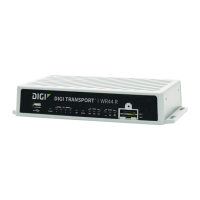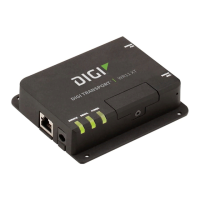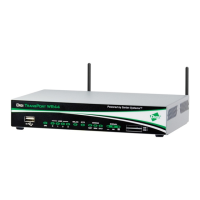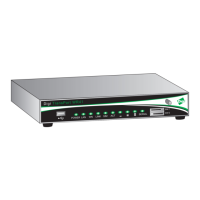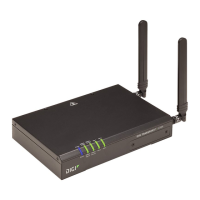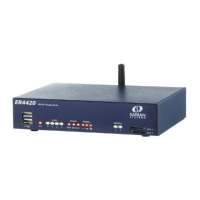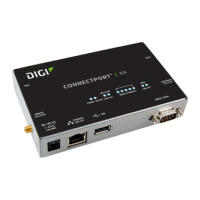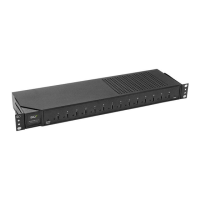Event Settings parameters
Digi TransPort User Guide 593
Email Notifications Parameter descriptions
To use the email alert facility, you must first specify a valid Dial-out number, Username, and
Password, and set the SMTP parameters correctly. The Dial-out number, Username and
Password parameters are on the Configuration > Network > Interfaces > Advanced > PPP n
pages where n is the relevant interface number. The SMTP parameters are on Configuration >
Alarms > SMTP Account.
Send email notifications
Enables the display of the configurable parameters when checked.
Send an email notification when the event priority is at least n
The lowest priority event that will generate an email alert message. For example, if this value
is set to 6, only events with a priority of 6 or lower (7, 8, or 9) trigger an automated email alert
message. To disable email alarms, set this value to 0.
Send a maximum of n emails per day
The limit on the number of emails that can be sent during any 24-hour period. The intention is
to prevent excessive alerts being sent when the event trigger value is set to a high priority /
low value (for example, 1, 2, or 3), such as a value that results in a large number of automated
email alert messages being generated.
n emails have been sent today
A status message, indicating how many emails have been sent during the last 24-hour period.
Use email template file
The name of a template file used to form the basis of any email alert messages generated by
the event logger. The default template is a file called EVENT.EML stored in the compressed
.web file. You can create alternative template, but to be valid, it must have the .EML file
extension and be stored in the normal file directory. A new template with the name
EVENT.EML takes precedence over the predefined EVENT.EML template, but it is
recommended that a new name is used, such as event1.eml.
Email To
The standard email address format for the intended recipient of the alert.
Email From
A valid email address that will be accepted by the SMTP server as being authorized to send
email.

